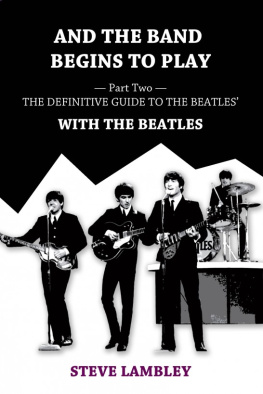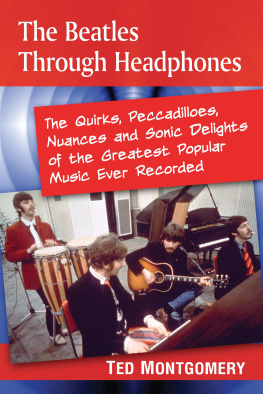Notice
Mention of specific companies, organizations, or authorities in this book does not imply endorsement by the author or publisher, nor does mention of specific companies, organizations, or authorities imply that they endorse this book, its author, or the publisher. Internet addresses and telephone numbers given in this book were accurate at the time it went to press.
2007 by Duke and Duchess Ventures, Inc.
All rights reserved. No part of this publication may be reproduced or transmitted in any form or by any means, electronic or mechanical, including photocopying, recording, or any other information storage and retrieval system, without the written permission of the publisher.
Book design by Drew Frantzen
Library of Congress Cataloging-in-Publication Data
Marsh, Dave.
The Beatles second album / Dave Marsh.
p. cm.
ISBN-13 9781594864261 hardcover
ISBN-13 9781609617165 ebook
1. Beatles. 2. Rock musiciansEnglandBiography. 3. Popular music19611970History and criticism. I. Title.
ML421.B4M186 2007
782.42166092dc22
2007030598

We inspire and enable people to improve their lives and the world around them
rodalebooks.com
For Matt Orel sparring partner
CONTENTS
1
GIVE THEM 22 MINUTES (THEYLL GIVE YOU THE WORLD)
Yeah, yeah, yeah.
I can recite the case for the prosecution as well as anybody.
The Beatles Second Album runs only 22 minutes. It contains just 11 songs. You might say the Beatles had nothing to do with it, since it folds into one disc tracks that have four or five discrete sources in the Beatles legitimate UK catalog. Dave Dexter Jr., the Capitol Records executive who assembled the album, despised rocknroll as a whole, believing it inferior to what he called legitimate music. Its indisputable that the group came to hate the idea of Dexters butchery.
Besides: Its full of songs the Beatleswho changed songwriting foreverdidnt even write. The track selection relegates Paul to an incidental lead vocalist, as subordinate to John Lennon as George Harrison is. Ringo doesnt even have a featured spot. The mixing and mastering leave the soundscape as shoddy as if it had been filtered through damp cardboard; the stereo rendition is worse.
With the Beatles, the second album the Beatles made for Parlophone Records, released only in the United Kingdom, is well balanced artistically between original songs (eight) and cover versions (six) and between Johns lead vocals and Pauls (with leavening from George and Ringo). Sonically, it was state of the art for 1964. Its 14 tracks run a combined 33 minutes.
On top of that, Capitol Records wrapped the Second Album in some of the cheesiest cover art of all time, worse than your average mid-sixties James Brown album. Its not even camp, its just slapdash: A dozen photos of the Beatles on each side, cropped every which way (one consists in its entirety of Ringos bangs, right eye, right ear, and nose), laid out in what seems to have been a single five-minute session. With the Beatles has a dignified, even intriguing light-and-shadow shot of the band. It is one of the defining images of their early career.
With the Beatles sports liner notes by Tony Barrow, the bands publicist; however callow, they are at least minimally informative. The back cover of The Beatles Second Album displays the song titles in order; a plug for their first US album, Meet the Beatles; and liner notes that consist of five lines off a theater marquee, written in ascendingly greater size type from a tiny Never before has show business seen or heard anything like them to a huge The Beatles Second Album. And in type about the same size as the copyright notice, Produced in London by George Martin.
The Beatles Second Album wasnt even the Beatles second albumnot in America or anywhere else. It came out in April 1964. In February, Vee-Jay Records had also produced an album of the groups early material, with a track listing that differed considerably from Meet the Beatles but also derived from the Parlophone masters. At about the same time, MGM Records issued The Beatles with Tony Sheridan and Their Guests using material the band recorded in Germany in 1961. On the five songs they play on (yes, the rest is material by some other band, not that MGM acknowledged it), the Beatles serve only as Sheridans backing group on all but one track, Cry for a Shadow.

So how can anybody love such an ungainly, fraudulent mess?
Because this brief album represents the Beatles of 1964, when they were unquestionably the greatest rocknroll band the world had ever seen. And it shows them, if not at their most shapely, at least with maximum brute force.
Because whatever Dave Dexter Jr.s intent, those 11 songs told things about the band and its music, rocknroll, and the world in general that some of us desperately needed to hear. And this is the way it was presented to us, the material we were given to use in making sense of the new world the Beatles awoke.
Because no matter whether it accurately portrays its makers and their condition in April 1964, the Second Album creates an image of the Beatles that is, arguably, closer to who they were, underneath the collarless coats and the careful coifs, the well-scrubbed complexions and constant affections, than anything else that leaked out to America in those heady first monthseven naked greed is allowed to raise its head.
Because some of what they didnt write had everything to do with what they did compose, then and in the future.
Because the balladYou Really Got a Hold on Mecame from Smokey Robinson and the Miracles, not from a damnable Broadway show, like Till There Was You, the ballad on Meet the Beatles.
Because if you let it, this music, arranged in this order, from the statement of purpose at the beginning to what may be the greatest rocknroll record they ever made at the end, will change your life.
It changed mine. Confessing this may rank with the goofier absurdities in the annals of rock criticism. Nevertheless, its flat-out true.
For the past 43 years, The Beatles Second Album has been, for me, a kind of lodestone. When it felt like the scent of freedom that leaped out at me from rocknroll and rhythm and blues had faded into the irrelevancies of the past, this record was one of the places where I could find refuge and reassurance. (Of course there are others. Anyone who tells you there is a single greatest rocknroll record either doesnt know enough to make the claim or doesnt love rocknroll enough to be worth listening to.)
Always, every single time I hear it, The Beatles Second Album makes the caseand not in a nostalgic sense. It feels fresh and alive. When it plays, the atmosphere it creates reminds me not only that the past isnt even past, as William Faulkner said, but also that the past is more than a hint of the future, it is the passkey to reaching it.


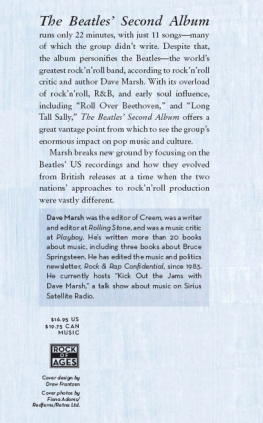

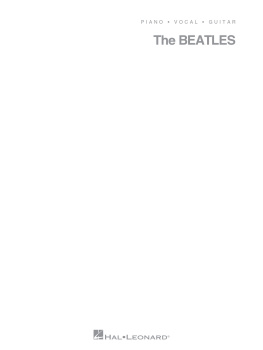
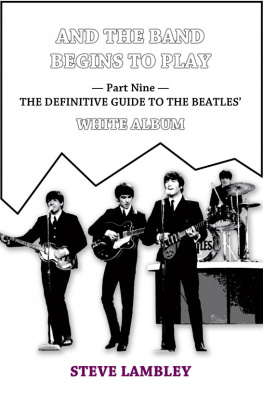
![Lambley - And the Band Begins to Play: [Part9 The Definitive Guide to the Beatles White Album]](/uploads/posts/book/213743/thumbs/lambley-and-the-band-begins-to-play-part9-the.jpg)
![Lambley - And the Band Begins to Play: [Part6 The Definitive Guide to the Beatles Rubber Soul]](/uploads/posts/book/213742/thumbs/lambley-and-the-band-begins-to-play-part6-the.jpg)
![Lambley - And the Band Begins to Play: [Part1 The Definitive Guide to the Beatles Please Please Me]](/uploads/posts/book/213741/thumbs/lambley-and-the-band-begins-to-play-part1-the.jpg)
